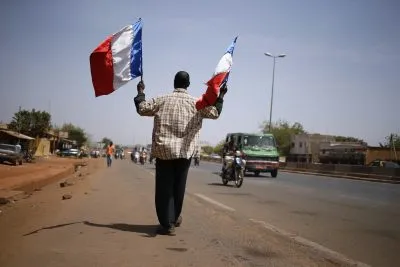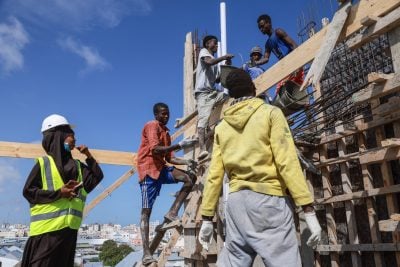Efforts are finally being made to strengthen trade ties between East and Central Africa, through the construction of twin inland container depots (ICDs) on either each side of Lake Tanganyika.
The eastern third of Democratic Republic of Congo (DR Congo) has traditionally traded more with the east coast of Africa than with the west, which is not surprising given that the region is actually closer to Dar es Salaam than the Atlantic coast. Yet such ties were almost strained to breaking point as a result of the Congolese civil war.
However, the development of ICDs near Kasanga on the Tanzanian side of the lake and at Mliro on the Congolese shore should encourage container traffic on the lake, which also has shorelines in Zambia and Burundi. Ashraf Khan, the chairman of the Container Freight Stations, Inland Container Depots and Dry Ports Association of Tanzania, said:
“The government’s efforts in renovating the road in Kasanga area have motivated us to come up with this project so as to improve trade in the economy.”
Improved road and rail links to both ICDs will, of course, be key to the project’s success. Given the regularity of new road improvement announcements and the frequency of road works in African cities, it seems like road and bridge construction is experiencing an all-time high on the continent. For instance, the Nigerian government has awarded the contract to construct a second Niger Bridge in the south of the country to the Julius Berger – Africa Infrastructure Management consortium. It overcame competition from a range of other firms, including China Harbour Engineering Company and Bouygues. Such ventures are the cornerstone to ensuring greater trade between different regions of Nigeria.
By the same token, new investment in international transport is also increasing. The government of Ghana has announced that work on the country’s second international airport could begin this year. China Airports Construction Corporation (CACC) is currently undertaking a final feasibility study into the project, which will be located near Pampram in Greater Accra. The airport will initially serve fewer passengers than the nearby established Kotoka International Airport, which is currently being upgraded. However, its location on a greenfield site means that it could become the country’s biggest airport in the long term.
Kotoka is centrally located but has limited room for further expansion. Chinese companies are also at various stages of developing four new airport terminals in Nigeria.
Ethiopia shines a light on regional power
Much has been made of the vast hydro generating capacity currently under construction in Ethiopia, and rightly so. National generating capacity is expected to jump from 700 MW to 10,000 MW in the space of a decade as a result of the completion of the Renaissance Dam among a host of other schemes that require huge amounts of building materials.
However, the government and investors have not put so much effort into the various schemes merely to supply the Ethiopian market. It is hoped that Ethiopia can become the biggest electricity exporter on the African continent, through the development of cross-border transmission lines.
Work on one of the most important elements in this vision is expected to begin before the end of this year. The Kenya Electricity Transmission Company has announced that the 1,000 km Ethiopia-Kenya line should begin exporting electricity by the end of 2016 or early 2017. It will be able to handle power exports equivalent to 2,000 MW of Ethiopian generating capacity, more than Kenya’s entire current capacity and could revolutionise power supply across Eastern Africa.
Funding for the $1.26bn interconnector has been provided by the two governments, the African Development Bank, the World Bank and Agence Française de Développement (AFD).
Want to continue reading? Subscribe today.
You've read all your free articles for this month! Subscribe now to enjoy full access to our content.
Digital Monthly
£8.00 / month
Receive full unlimited access to our articles, opinions, podcasts and more.
Digital Yearly
£70.00 / year
Our best value offer - save £26 and gain access to all of our digital content for an entire year!
 Sign in with Google
Sign in with Google 


